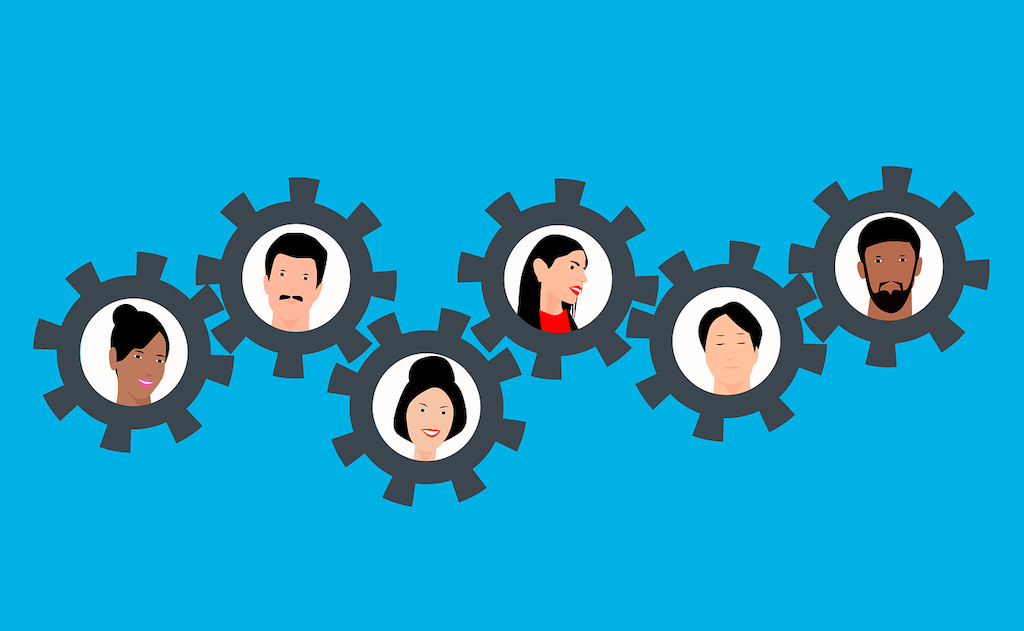Diversity, equity and inclusion (DEI) is top of mind for many companies. And for good reason – diverse and inclusive teams are more creative and engaged, make better decisions and produce better results. In this blog post, we’ll explore what is DEI and its role in building a positive workplace culture.
Organizations and businesses of all sizes today are comprised of more minorities – including women, people of color, and people with different sexual orientations – than ever before. This shift not only offers the workplace greater strengths, but also greater differences.
As a result, DEI has become increasingly important and crucial for the health, productivity and success of the organization from a business and a human standpoint.
What is DEI?
DEI is a term used to describe programs and policies that encourage representation and participation of diverse groups of people. This includes not only people of different genders, races and ethnicities, abilities and disabilities, religions, cultures, ages, and sexual orientations, but also those with diverse backgrounds, experiences, skills and expertise.
The goal is to not only hire a diverse workforce, but also to have systems and procedures that allow for all employees to be included in business happenings and have their voices heard. Studies show that DEI:
- Drives employee productivity and employment
- Fosters creativity and innovation
- Grows a company’s talent pool
- Reduces employee turnover
- Increases profits and grows a company’s market
Employees and job seekers increasingly view DEI as a key attribute defining a positive workplace culture, according to recent reports.
About 1 in 4 job seekers in 2021 said DE&I is the most important area of investment to improve company culture, according to a survey by LinkedIn Talent Solutions.
DEI isn’t just the responsibility of one person or team. It’s shared by every employee and plays a huge role in building a positive workplace culture.
DEI Tips for Building a Positive Workplace Culture
Recognize unconscious bias – Biases can easily sneak into all aspects of daily operations, such as talent acquisition, team formation, ideas sharing, rewards, etc. To understand the current state of DEI at your organization, consider conducting an inclusion survey. This is a valuable tool for understanding whether your team and processes are inclusive.
Provide resources – To keep DEI top of mind for your employees and encourage them to learn more about pressing societal and workplace issues, try giving them access to robust resources so they can self-serve their curiosity.
To keep DEI top of mind for your employees and encourage them to learn more about pressing societal and workplace issues, try giving them access to robust resources so they can self-serve their curiosity.
Make DEI a top priority – Change moves through an organization from the top down. That’s why it’s so important to earn that executive buy-in from the get-go. But, while your exec team can be your biggest advocates, it is important to embed DEI practices across all levels.
Set expectations – While you might be itchy to see the results of your DEI efforts immediately, you need to remember that meaningful change takes time. Be upfront about the fact that the impact of your DEI initiatives won’t be felt immediately throughout the organization. This helps set expectations early and encourages your team to be patient.
By creating a diverse and inclusive environment, managers have a tremendous opportunity to bring out the best in their people and channel differences into unique assets for their team.
With a clear focus on DEI, organizations can bring out the best in their people and channel differences into unique assets for their team. Building a positive workplace culture is a win-win for everyone.
Make HR management one less thing to worry about. Whether you are a startup or a growing company with 50+ employees, HRO has the tools you need so you can focus on guiding your team to success.

